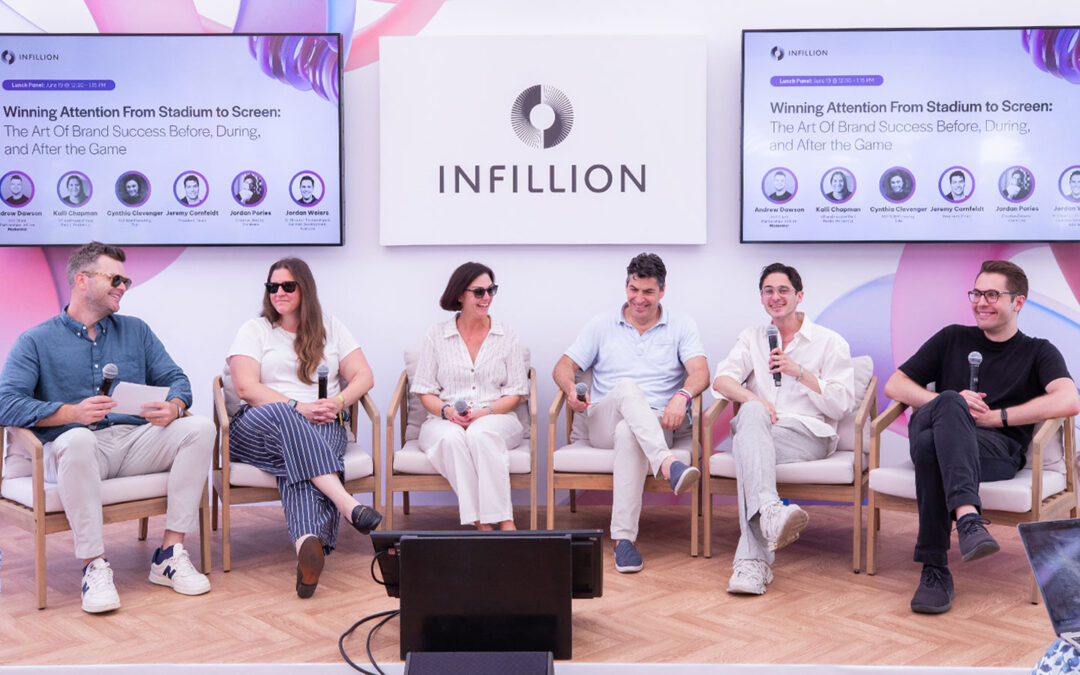Cutting Through Programmatic Chaos at POSSIBLE

Ad tech is a chaotic business. And at an industry confab like this week’s POSSIBLE conference in Miami, that chaos jumps out of dashboards and spreadsheets and comes to life.
The dizzying array of panels, parties, company logos, and swag giveaways drives home the reality that nearly a third of marketers think there are too many tools in their ad tech stack and 35% say they struggle to integrate them with one another. Emerging upstarts are jammed up next to longtime industry stalwarts at sun-soaked pool cabanas, each trying to win over attendees with perks like a sangria station or custom hats painted by a local Miami street artist. The spirit of innovation and disruption is powerful, but the sensory overload is very real.
When it comes to the industry’s day-to-day chaos (as opposed to POSSIBLE’s beachfront chaos) new technologies, platforms, and strategies are promising to make some sense of the mayhem. That’s what Infillion wanted to explore in the panel we hosted during POSSIBLE, “Disrupting The Disruptors.” Has ad tech spiraled out of control? What’s happening now – and why is it happening now – that might change things?
“We keep on adding technology, and then things keep getting more opaque even though this one piece of technology was supposed to simplify everything,” moderator Catherine Perloff, reporter at The Information, said as she introduced the panel.
How pivotal is this inflection point? “This is just another chapter in a book of chaos that’s lasted for the past 20 years,” said Evan Hovorka, VP of product innovation at Albertsons Media Collective.
But there’s reason to think the tide may be turning. “One of the issues of ad tech over the years has been that technology has been added to the chain, has been added to the stack, to separate the buy and the sell sides in particular,” said Scott Ensign, chief strategy officer at independent agency Butler/Till. “I’m optimistic that the industry is compressing that. You’re seeing the buy side and the sell side talk to each other more.”
Channeling that optimism, here are a few of the topics that attracted the most interest as areas of growth and change.
Agentic AI
Last year at POSSIBLE, most of the banter around artificial intelligence was still centered on the role of generative AI and how it’s shaping advertising. This year, there were no fewer discussions about AI (in fact, there were probably more) but much of the focus had shifted to agentic AI – the use of automated “agents” to take over specific processes within programmatic advertising transactions. It’s already growing fast. Gartner estimates that agentic AI will be baked into 33% of enterprise software applications in 2028, up from just 1% in 2024.
Agentic AI is, crucially, seen by many ad tech professionals as a beacon of hope – that it could connect tools that currently fail to “talk” to one another and deftly manage processes that human professionals find time-consuming and inefficient.
“AI agents could automate a lot of the capabilities that you have within your teams and make it accessible to much smaller advertisers with the same knowledge,” said Jeremy Woodlee, Infillion’s general manager of our Enterprise business unit.
In the ad industry, agentic AI comes with the same fear that generative AI does – but for media buyers, not just creatives. But there are some things even the best agentic system can’t do, like build relationships with clients and forge connections of mutual trust.
“I think there’s this misconception in the industry that AI is going to take all our jobs and media buying is going to become completely automated,” said Kristy Quagliariello, VP of programmatic at Klick Health. “At the end of the day you need to have a human presence in the media buying process.”
Connected TV
Many ad tech professionals no longer think of CTV as an emerging platform. After all, CTV ad volume is expected to surpass linear TV’s in 2028, and it became the biggest destination for TV viewing (surpassing broadcast and cable) in 2022. But CTV is still a novelty to many traditional advertisers, especially when inventory is transacted on programmatically as opposed to through direct buying. It’s also newly open to clients for whom traditional TV buying was never an option, giving them both programmatic efficiency and unprecedented scale.
“We’re still talking about it like it’s new,” said Kristy Quagliariello. “It’s not, but to a lot of clients it is – especially if they don’t have huge linear TV budgets.”
“CTV’s been a huge one,” concurred Evan Hovorka of Albertsons Media Collective. “We’re doing it in a managed service way and a self service way, and then our big investment is in-store screens.”
The migration to CTV also means shaking off some long-held practices and patterns that advertisers may consider second nature. “The campaign mindset was built on linear television,” said Scott Ensign of Butler/Till. “You don’t have to be relying on a schedule that’s built on a scarcity model. You can do it all the time.”
Retail Media Networks
Retail media networks, or RMNs – ad inventory powered by the often enormous amounts of first-party customer data that retail and commerce outlets have – have been one of the hottest areas for programmatic growth. And it’s not just hype: It’s the fastest growing channel in advertising, according to eMarketer.
That owned, reliable, and rich customer data can offer more precise targeting and efficiency to advertisers. The challenge is that if the RMN sector is going to keep growing fast enough to fulfill this promise, it needs to expand beyond the relatively narrow scope that it’s been associated with – ads on retailers’ owned properties, often for products that those retailers sell directly, and often with very explicit lower-funnel objectives (in other words, quick conversions).
For the RMNs themselves, being able to expand to other properties is key. “We’ve had double digit growth of our digital properties for many quarters, but it can’t grow as fast as TikTok,” Albertsons Media Collective’s Evan Hovorka said as he explained Albertsons’ initiatives to grow its network through off-site channels.
They’re also turning their eye to non-endemic products that might not be sold on their own websites (or in the aisles of their stores). “There’s a misconception that the only people using RMNs are CPGs,” said Kristy Quagliariello. “[But] all of our current clients are pharma, and there are so many adjacencies.”
Growth this rapid can be overwhelming, especially with RMNs opening up new channels and data sources that will require future-forward tools to manage it all. But that’s cause for excitement, especially among the companies that are excited to be part of this evolution. As Infillion’s Jeremy Woodlee said, “The doors are opening to the future.”
Curious about Infillion’s work in the retail media sector? We have a brand-new hub for it right here.
Subscribe to our blog:
Related Posts:

Not All Attention Is Created Equal – Especially In Sports
If you’ve spent enough time working in advertising, you know that a few things are true about marketing to live sports audiences. One, fans are passionate, and they’re paying attention in a way that’s the envy of brands. But on the other hand, they’re not there for...

The Consumer-First Approach To Commerce Media Network Success
Your airline is an ad platform now – and so is your bank. Commerce media networks are one of the most interesting areas of growth in advertising, and at Cannes Lions, plenty of them were onsite to talk about it. That’s a conversation that we explored at the Infillion...

Why Neurodiversity Will Lead The Way In The AI Era
One in five employees today identifies as neurodivergent – as having autism, ADHD, dyslexia, or other cognitive variations – and that’s only going to grow. According to research from ZenBusiness, fully half of Gen-Z identifies with neurodivergence on some level....
Let's Connect

